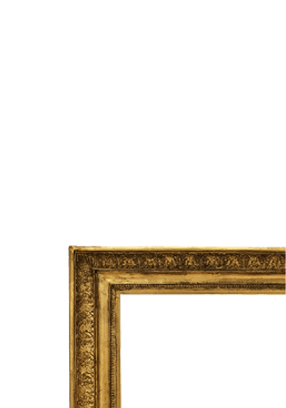Library History
Library History
-
2025Kids Library Renovation
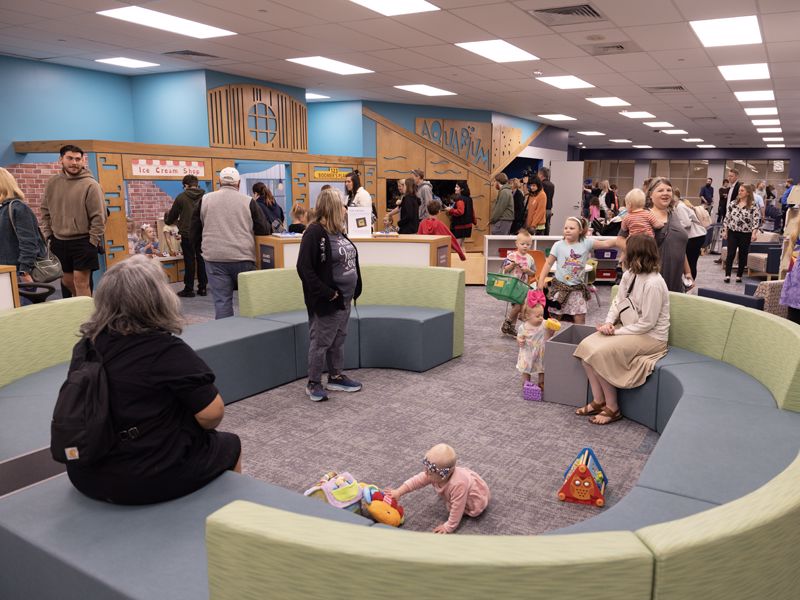 The redesigned space is a 14,050-square-foot interactive wonderland for kids & teens to learn, play and grow.
The redesigned space is a 14,050-square-foot interactive wonderland for kids & teens to learn, play and grow. -
2024Wing Updates
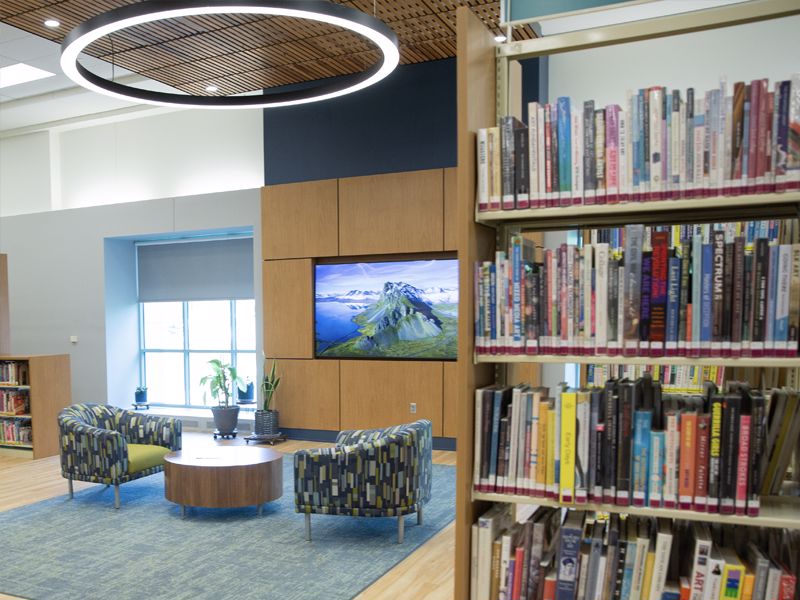 The fiction and nonfiction wings were updated to a bright, open and relaxing area to find a book, work on your device, chat with a friend, meet with a book group or escape into your latest read.
The fiction and nonfiction wings were updated to a bright, open and relaxing area to find a book, work on your device, chat with a friend, meet with a book group or escape into your latest read. -
2023New Book area opens
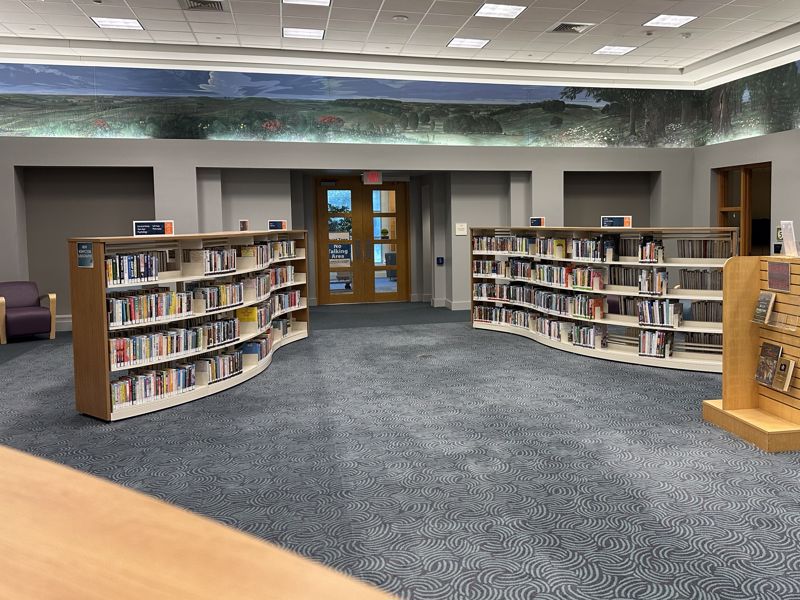 This renovated area is the hub and jumping off point for readers looking for the newest books that we have.Movies & Music Room RenovationNew furniture, new shelving, and the extension of the cafe dining.
This renovated area is the hub and jumping off point for readers looking for the newest books that we have.Movies & Music Room RenovationNew furniture, new shelving, and the extension of the cafe dining. -
2022Level 2 Tech Center opens
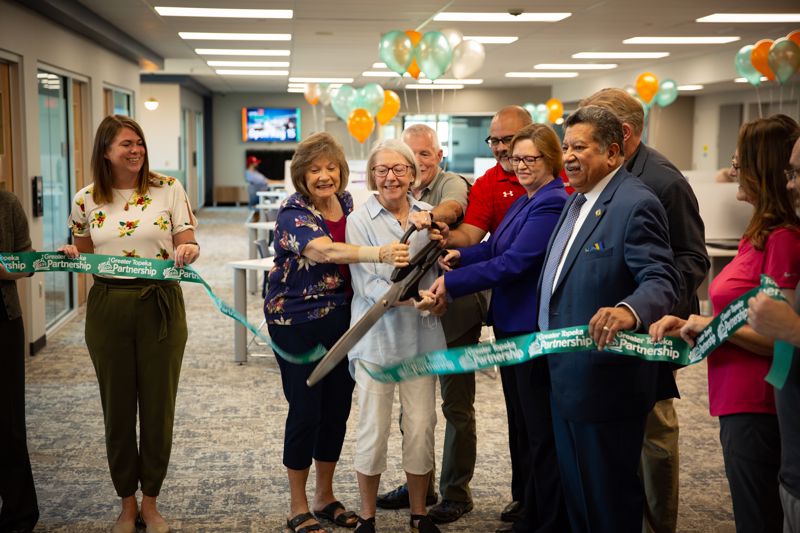 This area includes a fully-equipped digital art studio, two recording studios, 30 computers and 5 small meeting rooms.
This area includes a fully-equipped digital art studio, two recording studios, 30 computers and 5 small meeting rooms. -
2021Friends of the Library
50th AnniversarySince 1971, Friends have donated more than $1.9 million to the library.Millennium Cafe Renovation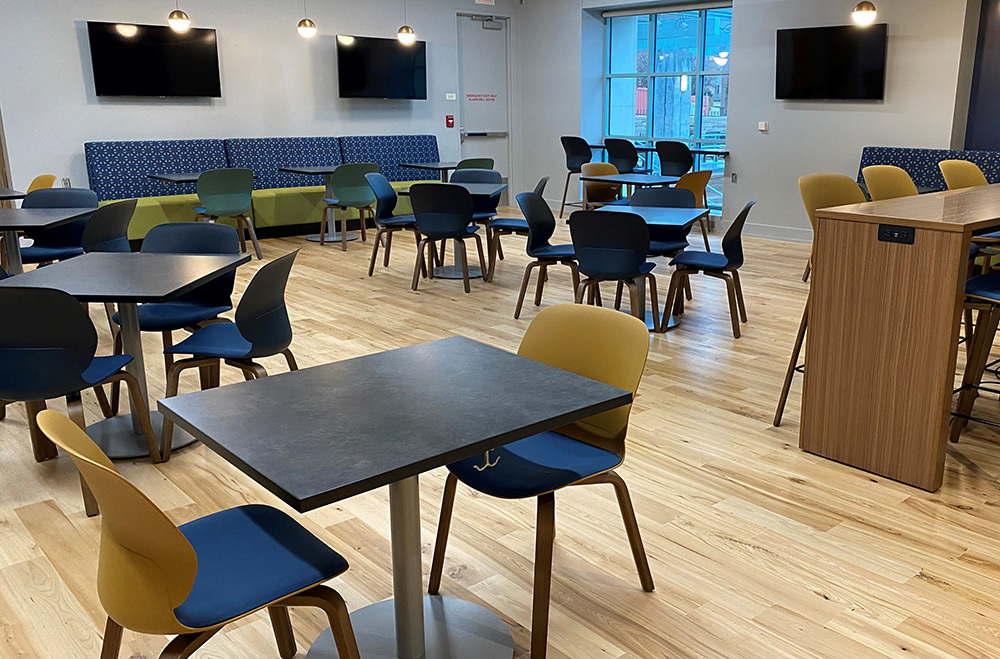 Cafe gets a makeover with new flooring, seating and decor.
Cafe gets a makeover with new flooring, seating and decor. -
2020150th Anniversary of the Topeka & Shawnee County Public LibraryLibrary celebrates 150 years of serving the community.Alice C. Sabatini Gallery Renovation
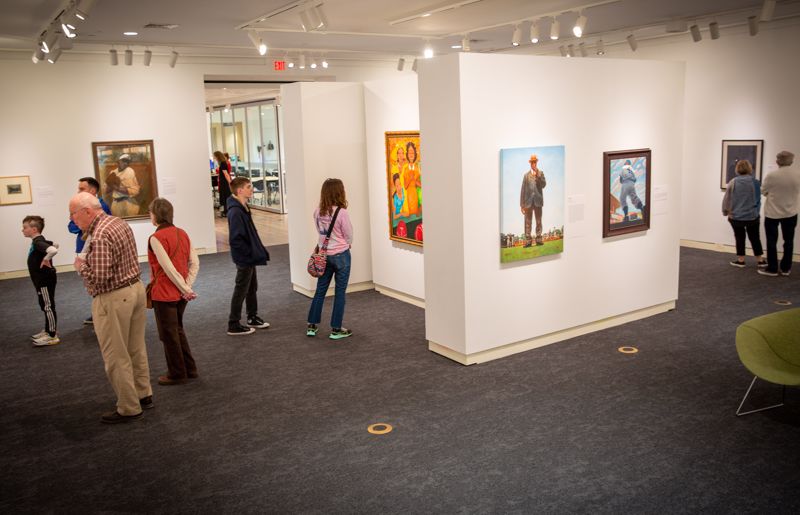 The gallery was remodeled to increase visibility, introduce an art creation space, and showcase the increasing permanent art collection.Library Closes due to COVID-19In March, the spread of the COVID-19 virus had grown to pandemic proportions necessitating the mandatory closure of non-essential businesses. The library sought unique ways to maintain its availability to the community during this time.
The gallery was remodeled to increase visibility, introduce an art creation space, and showcase the increasing permanent art collection.Library Closes due to COVID-19In March, the spread of the COVID-19 virus had grown to pandemic proportions necessitating the mandatory closure of non-essential businesses. The library sought unique ways to maintain its availability to the community during this time. -
2019Claire's Courtyard Opens
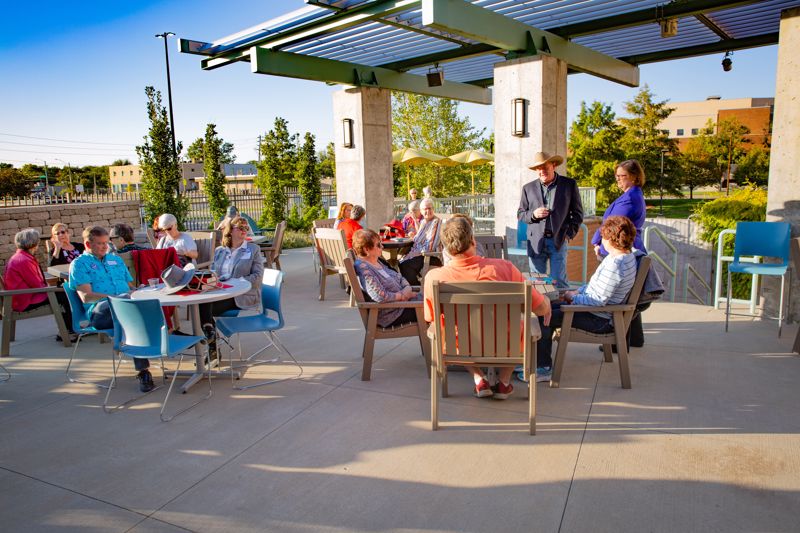 Includes a year-round sunroom, courtyard and an outdoor amphitheater.Customer Plaza RenovationThe customer plaza is renovated with large print books moving up front, along with the copy center.Learning Center OpensLearning center is updated with new flooring and a new commitment to learning.
Includes a year-round sunroom, courtyard and an outdoor amphitheater.Customer Plaza RenovationThe customer plaza is renovated with large print books moving up front, along with the copy center.Learning Center OpensLearning center is updated with new flooring and a new commitment to learning. -
2016Library of the Year
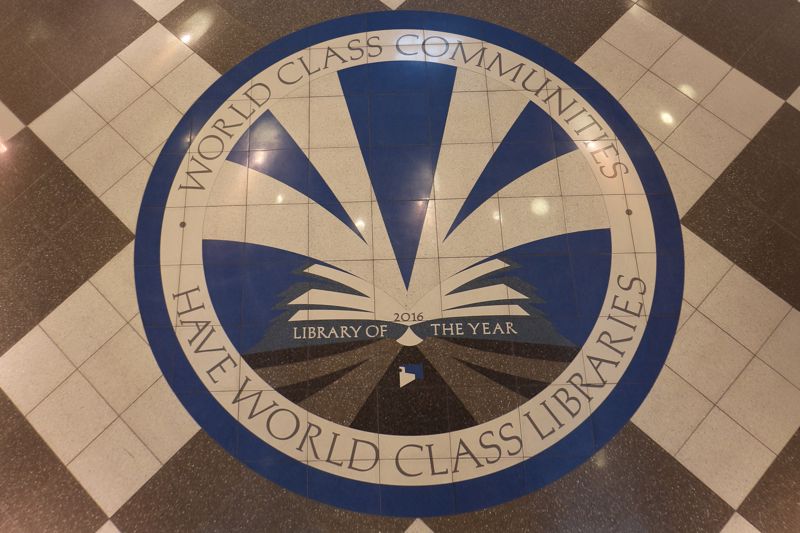 The vision of how our library connects and supports our community was awarded top library in North America honors.
The vision of how our library connects and supports our community was awarded top library in North America honors. -
2015Learn and Play Bus Begins Service
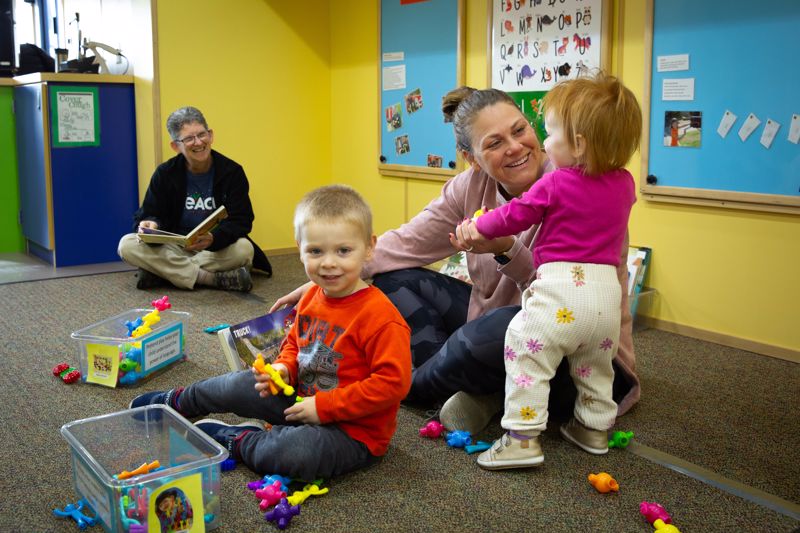 Families continue to visit the bus weekly all over the community and children ages 0-6 are provided with a 1-2 hour learn through play.
Families continue to visit the bus weekly all over the community and children ages 0-6 are provided with a 1-2 hour learn through play. -
2014RFID ImplementedThe implementation of RFID tags for self-checkouts gave patrons access to more self-service, created a better control of inventory and marked a shift to the ability of staff to focus more on patrons and social service to the community.
-
2012Kids Library Remodeled
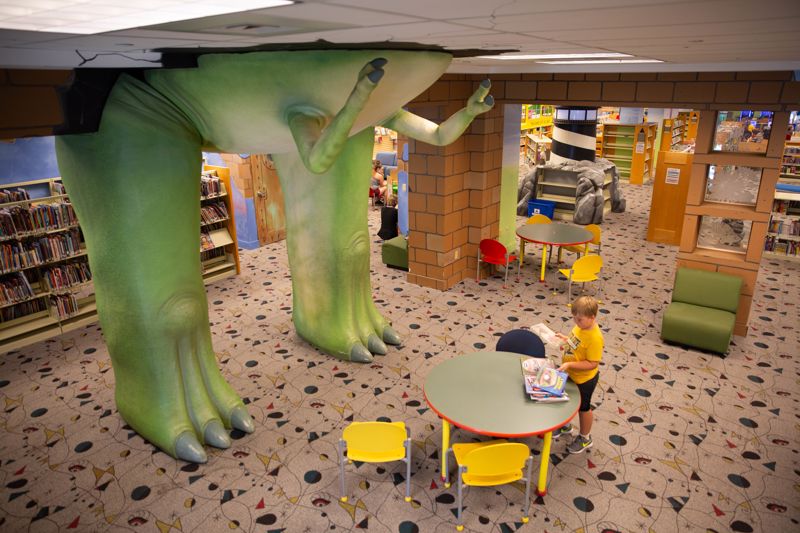 The Kids’ Library was remodeled to better meet the playful learning needs of Topeka’s youth. A saltwater aquarium and a fiberglass Tyrannosaurus Rex could be found in the new space. The Kids’ Library was funded primarily through private funds which included a community gift by the Junior League of Topeka to commemorate its 75th anniversary.
The Kids’ Library was remodeled to better meet the playful learning needs of Topeka’s youth. A saltwater aquarium and a fiberglass Tyrannosaurus Rex could be found in the new space. The Kids’ Library was funded primarily through private funds which included a community gift by the Junior League of Topeka to commemorate its 75th anniversary. -
2007Baker Genealogy Center OpensThe Baker Genealogy Center is made possible with generous support of Dr. Phillip and Betty Baker. It houses comprehensive resources in print, electronic form or microfilm.
-
2002Grand Reopening of the Library
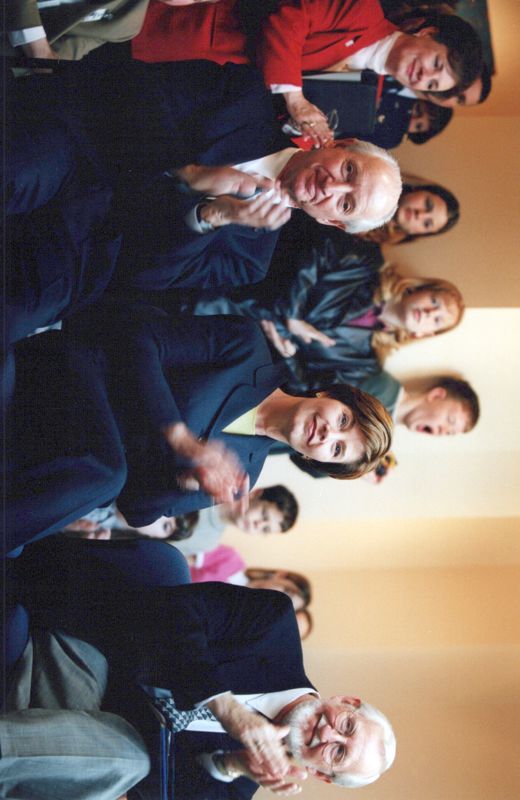 January of 2002 was the grand reopening of the newly expanded library. First Lady Laura Bush, a former teacher and librarian, was on hand for the festivities.
January of 2002 was the grand reopening of the newly expanded library. First Lady Laura Bush, a former teacher and librarian, was on hand for the festivities.
Award winning architect Michael Graves provided the design for the exterior and interior of the building.
The new expansion renovated the 65,000 square foot existing building and added 100,000 square feet of new space. The building’s design is a showpiece for the town, a dynamic space that is welcoming to the public and reflects the progressive nature of the institution. -
1993Friends Open Used BookstoreThe Booktique was located in the library’s portion of the Medical Arts building at 10th and Horne.Bookmobile Celebrates 5o Years of ServiceAlong with 50 years of service, Bob and Hazel Lingo presented $62,000 to the library to purchase a new bookmobile. The bookmobile carried 4,500 items and made 25 stops in the city and county.
-
1992Library Tax Base ExpandedA November ballot asked whether a countywide library district should be formed to expand the library’s tax base to include county residents. New statistics showed non-Topekans used library more than those who pay for it.
The voters of the city and county approved a new Topeka and Shawnee County Library District. The library’s name changed to the Topeka and Shawnee County Public Library. -
1991Library Installs Online CatalogThe library joins the computer age. The card catalog and the circulation system was automated. There was no longer drawers of catalog cards; all information was available from a computer terminal.Lingo Gift Supports Library ExpansionBob and Hazel Lingo give a gift of $50,000 to the library for expansion of its children’s section. The Lingo Story Room is the result of that gift.
-
1986Library Ranks 29th in NationTwo hundred libraries representing 40 states were selected for their quality of public service and general administration. Topeka Public Library was 29th of that 200. In that year the library had 55,00 registered borrowers and circulated 1 million books annually.
-
1978Steinway Grand Piano Purchased by FriendsThe Friends of the Library presented a Steinway grand piano for use in the auditorium.
-
1976Remodeled Library Opens to the PublicThe remodeling and expansion program was completed. An open house was held on Sunday, January 4. A two-story addition was built on the south and extensive remodeling done in the rest of the library. Included in the work was a 200-seat auditorium, a Gallery of Fine Arts and the Topeka Room furnished by the Friends of the Library.
-
1970Friends of the Library EstablishedFormed to help with the bond issue for the bill passed by the legislature to levy a one-mill tax for five years to support the cost of expanding and remodeling the library building. The referendum passed on August 4, 1970.
The first officers of the Friends group were W. F. Hardesty, president; John Ripley, vice president; Mrs. Mabel Moses, secretary; and Glenn Swogger, treasurer.The Library Celebrates 100 YearsA hundred years after the Ladies Library Association was founded in 1870, the library celebrates the 100th anniversary of the library. -
1961Library on Capital Grounds Torn DownMore than 30,000 signatures were received in the effort to save the original library, but time would not save the building. In 1961 it was torn down and the site cleared and leveled.
-
1953Library Opens at 10th & Washburn
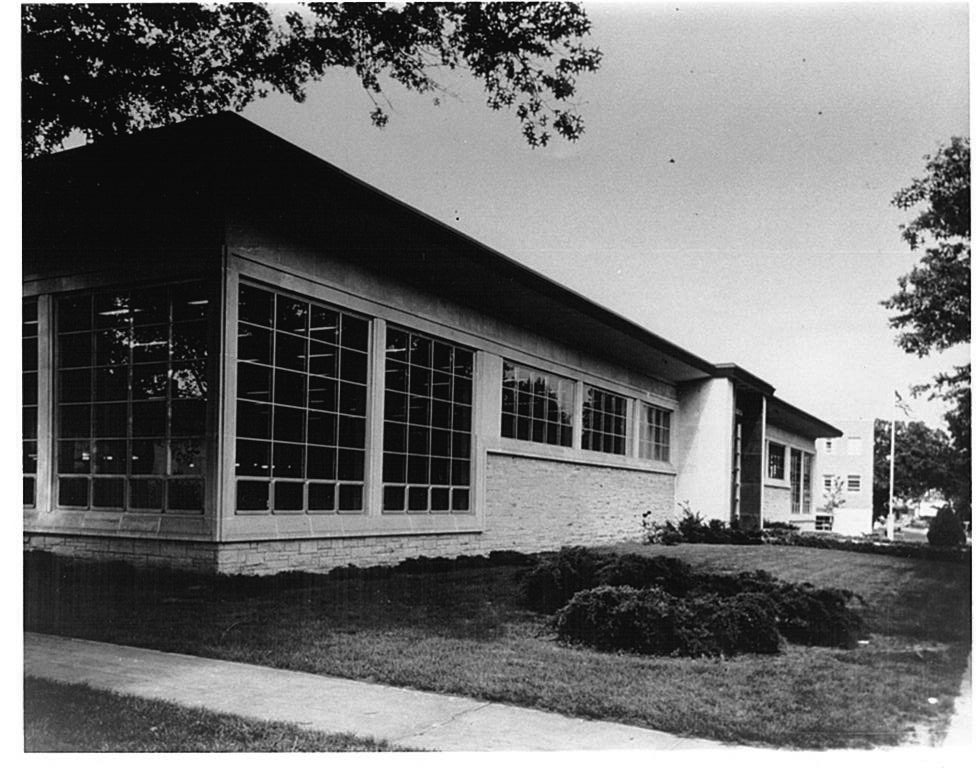 On December 14, 1953 the new library building opens on the grounds of Westlawn Park.
On December 14, 1953 the new library building opens on the grounds of Westlawn Park. -
1943First Traveling Branch Hits the Road
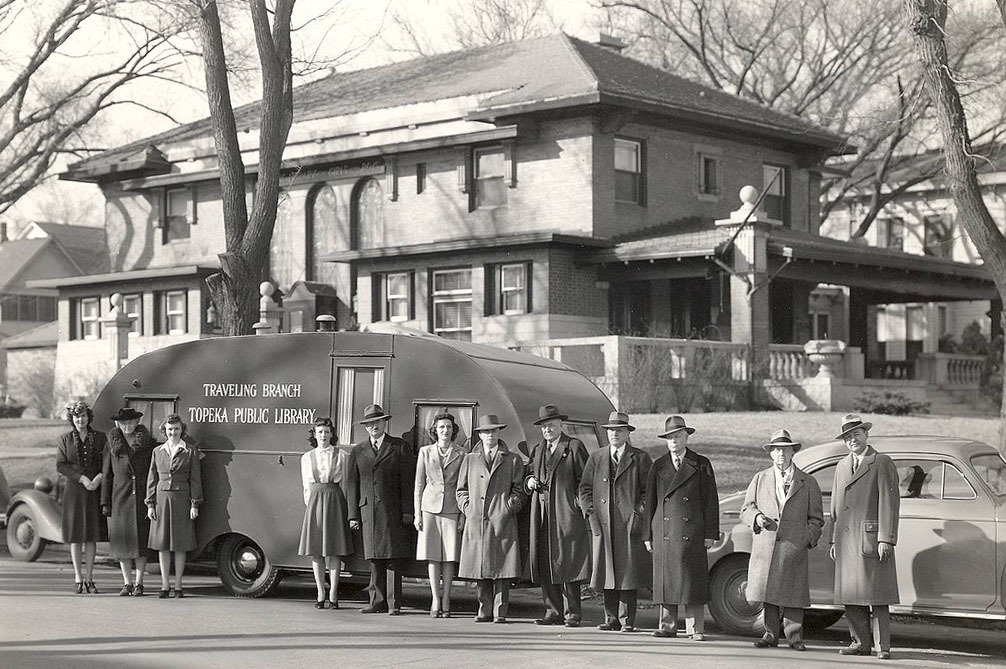 A Chevrolet coupe and converted house trailer became the first traveling branch. The inside walls of the trailer were lined with shelves that could hold 1,200 books; at the front was an L-shaped desk for the librarian and cupboards for supplies. The trailer was heated with a kerosene stove and there were colorful curtains at the windows. The library on wheels made 10 stops each week. It was an unqualified success.
A Chevrolet coupe and converted house trailer became the first traveling branch. The inside walls of the trailer were lined with shelves that could hold 1,200 books; at the front was an L-shaped desk for the librarian and cupboards for supplies. The trailer was heated with a kerosene stove and there were colorful curtains at the windows. The library on wheels made 10 stops each week. It was an unqualified success. -
1942Branch Libraries CloseBecause of lack of funds, and the inability of the board of education to help with expenses, the branch libraries are forced to close. Topeka once again was limited to the central building on the statehouse grounds.
-
1939Mulvane Girls & Boys Library OpensA home at 11th and Mulvane is gifted to the library by the estate of David W. Mulvane. After hard work and fundraising, the home was turned into the children's library.
-
1925Library Served Notice to Vacate Statehouse GroundsGovernor Ben Paulen, acting for a legislative commission, served notice on the library to vacate statehouse grounds site. Plans for a new site and building, with voter approval, got underway. The vote failed and the library remained on statehouse grounds.
-
1918Branch Library System CreatedA branch library system was established in cooperation with the Topeka school system. By 1932 there were branches at Curtis and Holliday junior high schools and Washington, Lafayette, Randolph and Gage Park elementary schools.
-
1901Wilder Gives Art Collection to the LibraryEdward Wilder gathered treasures in Europe as the foundation for the library’s fine arts collection. Wilder donated a splendid collection of chinaware, glassware and pictures .
-
1883Statehouse Library Opens
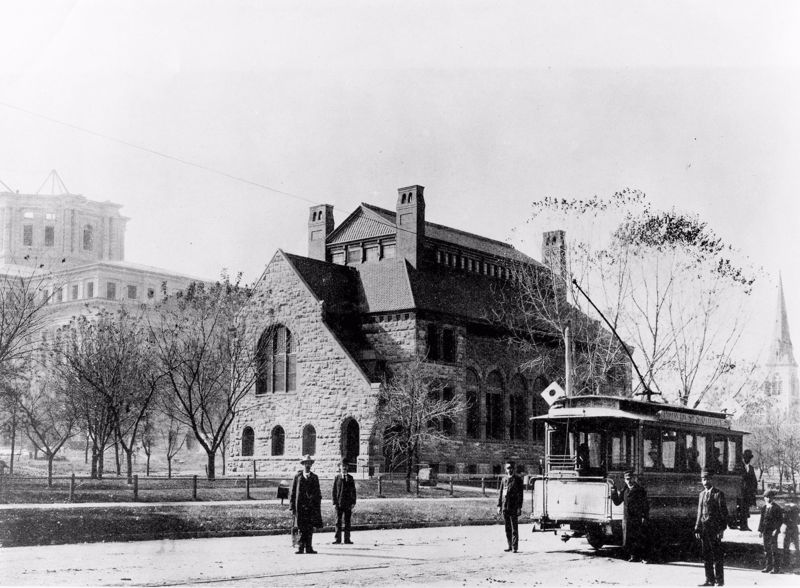 Edward Wilder, Secretary-Treasurer of the Santa Fe Railroad and President of the Library Board, convinced the Union Pacific Railroad and the Santa Fe Railroad to jointly fund a building for the library on the State House grounds.
Edward Wilder, Secretary-Treasurer of the Santa Fe Railroad and President of the Library Board, convinced the Union Pacific Railroad and the Santa Fe Railroad to jointly fund a building for the library on the State House grounds.
The grand dedication of this building was held on a “balmy” night in April 1883. -
1872Ladies Library Association Becomes Topeka Library AssociationMen allowed to attend meetings for first time.
-
1870Ladies Library Association Formed
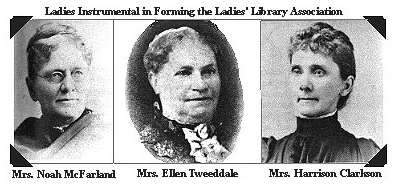 A committee was appointed to prepare a constitution and bylaws. This historic meeting took place in a second floor lodge room over the J.W. Davis Dry Goods Store, on the east side of Kansas Avenue, between 7th and 8th streets.
A committee was appointed to prepare a constitution and bylaws. This historic meeting took place in a second floor lodge room over the J.W. Davis Dry Goods Store, on the east side of Kansas Avenue, between 7th and 8th streets.
Topeka in the 1870s was little more than a frontier town striving to survive. 1870 brought financial panic and a grasshopper plague worse than any could remember. Approximately 8,000 people lived in the area around the current downtown area.
CSS code
Tagged with:
library history |
history |
local history





